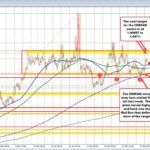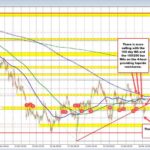
Riding the Bull: Analyzing USD/CAD’s Recent Momentum and Market Trends
Tháng 4 1, 2025
RBA Holds Cash Rate Steady: What This Means for the AUDUSD
Tháng 4 1, 2025US Dollar Under Pressure as Treasury Yields Decline
In recent weeks, the US dollar has been experiencing notable pressure largely attributed to the decline in Treasury yields. The yield on the 10-year Treasury bond has dipped below the crucial threshold of 4.20%, settling around 4.18 to 4.19% in early April 2023. This drop in yields signals a significant shift in investor sentiment and reflects a broader cautiousness in the market landscape.
The Impact of Falling Treasury Yields
The decreasing Treasury yields can be interpreted as a shift in risk appetite among investors. With the ongoing volatility observed in equity markets, many investors seem to be pivoting away from stocks and seeking refuge in safer assets, such as government bonds. This trend draws attention to the behavior of investors, who may prioritize stability over potential high returns during uncertain times.
As investors flock to safe-assets, we can expect a further impact on the US dollar’s value. The dollar, traditionally viewed as a safe-haven currency, faces the risk of depreciation as its yield attractiveness diminishes. The interplay between Treasury yields and the dollar is crucial; lower yields can lead to a decrease in demand for the dollar, subsequently affecting its exchange rate against other currencies.
Geopolitical Tensions and Economic Factors
In addition to declining yields, geopolitical factors are also exerting pressure on the US dollar. The United States has been navigating a complex landscape of tariff policies and international trade relationships, leading to increased uncertainty in the global market. Trade tensions can have a ripple effect, contributing to market instability and influencing how investors allocate their capital. For insights into how these trade tensions influence China’s international strategies, see three strategic moves by China Xi.
As the political climate becomes increasingly tense, both domestically and internationally, investor behavior may skew towards caution. The diverging interest rates across economies also play a significant role—concerns about the US economy, coupled with the emergence of alternative markets and investments, may further amplify the downward trend for the US dollar.
Gold’s Allure During Volatility
Amid this environment of trepidation, gold has reached new heights, indicating a robust demand for safe-haven assets. Gold often serves as a hedge against market fluctuations, and its rise continues to make headlines in light of the current economic climate. The precious metal’s ascent can be seen as a direct response to the increased volatility in equity markets and the ongoing uncertainty surrounding Treasury yields.
Investors frequently turn to gold during periods of financial instability, believing it to preserve value better than fiat currencies. The convergence of rising gold prices and decreasing Treasury yields paints a picture of a market seeking safety and security, thereby further complicating the narrative surrounding the US dollar. For a deeper understanding of investment strategies in this volatile environment, refer to top investment mistakes to avoid in 2023.
Conclusion
In summary, the US dollar faces a challenging landscape characterized by falling Treasury yields, geopolitical tensions, and shifting investor sentiments towards safe-haven assets like gold. As this situation continues to unfold, stakeholders in the global economy must remain vigilant, adapting their strategies to mitigate risks associated with currency fluctuations and market volatility. The coming weeks will be critical in determining the direction of the US dollar and the broader implications for international trade and investment.
Investors and analysts alike should closely monitor these developments as they navigate this dynamic environment, where tensions, yields, and asset prices interact in complex ways.
